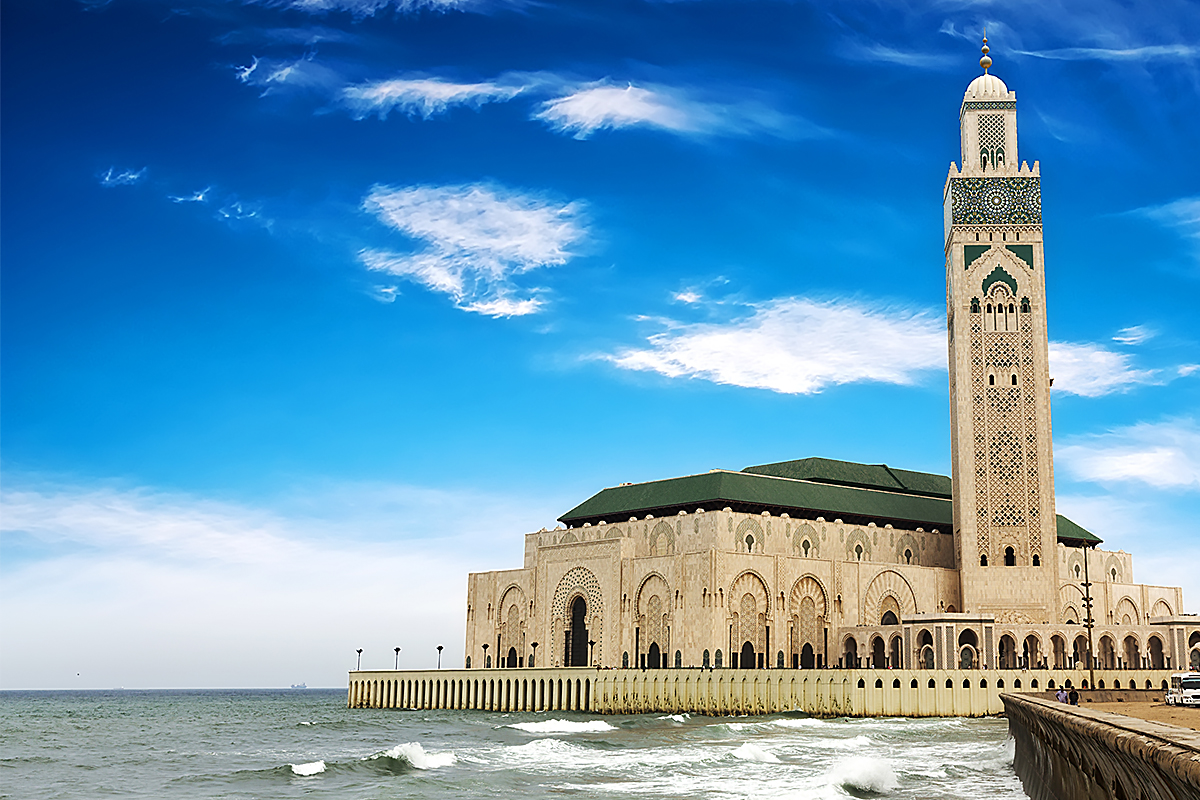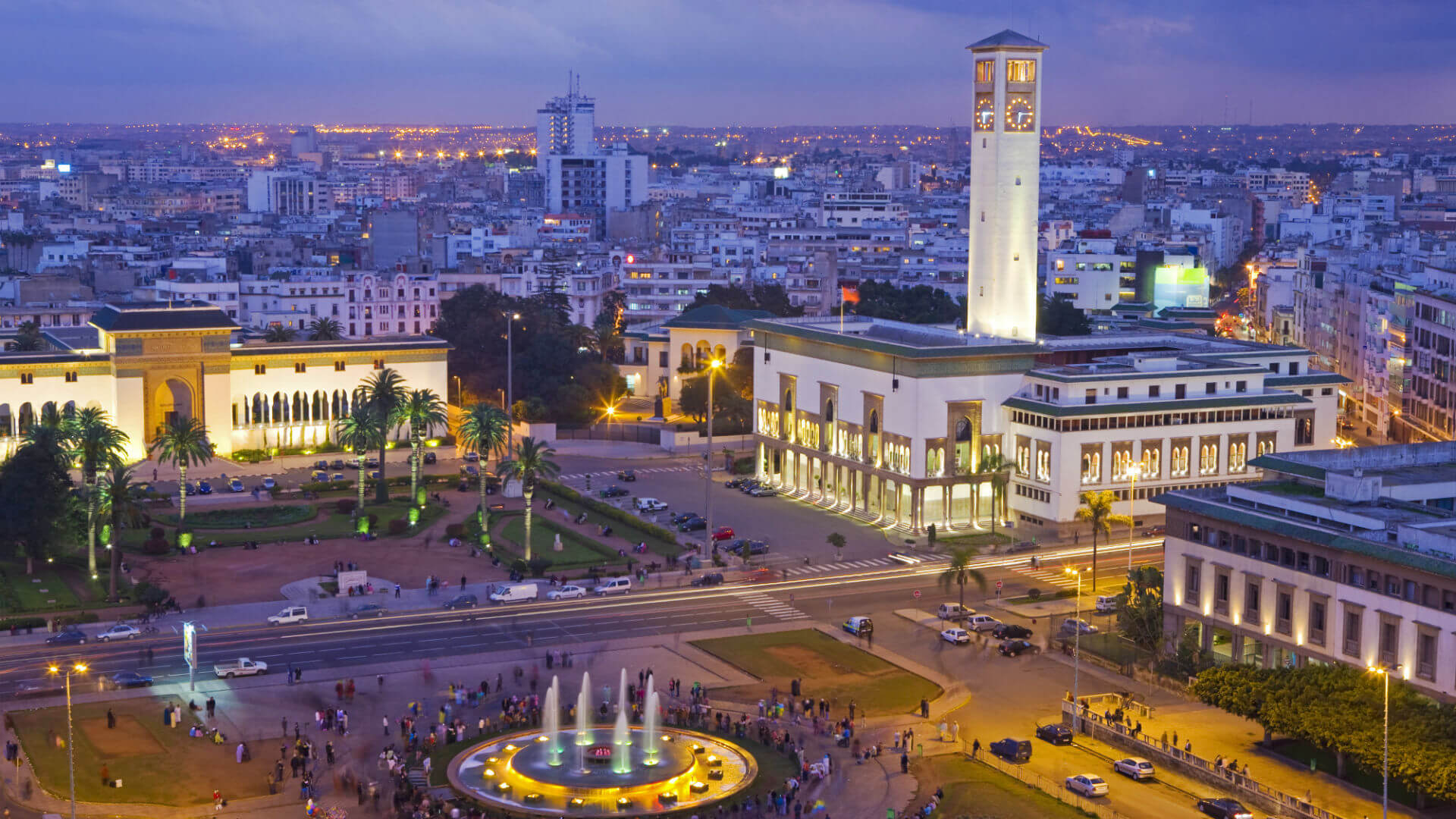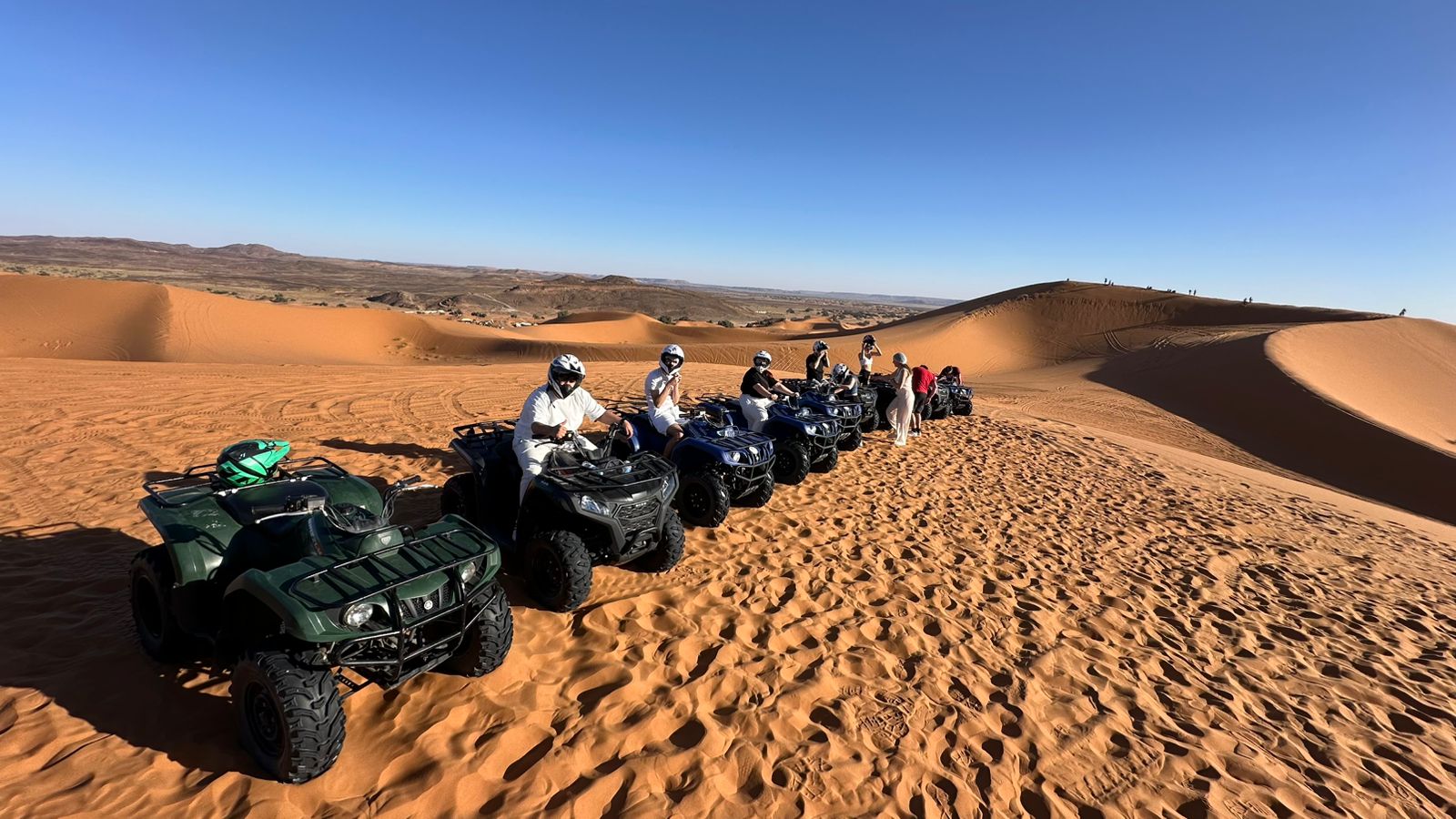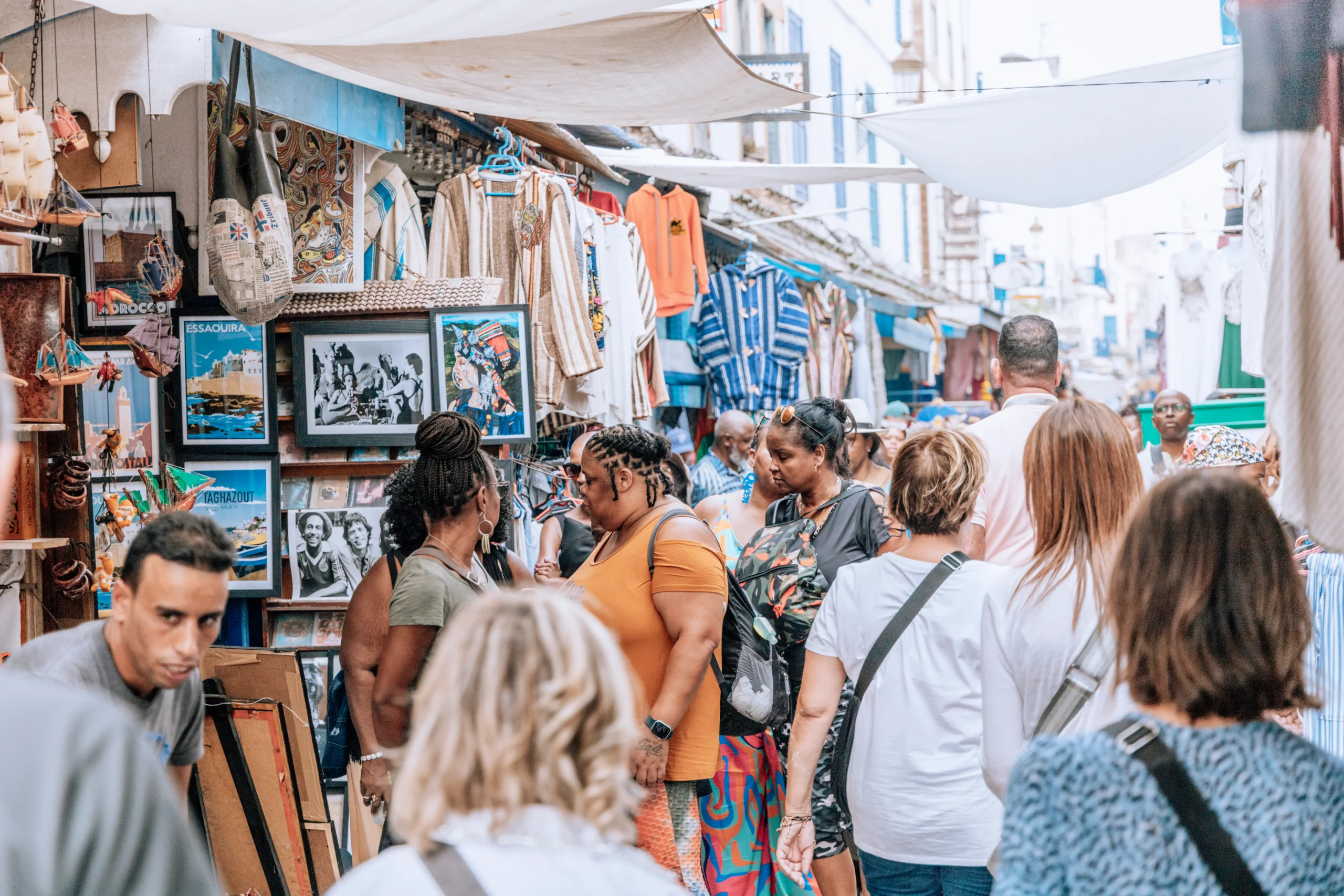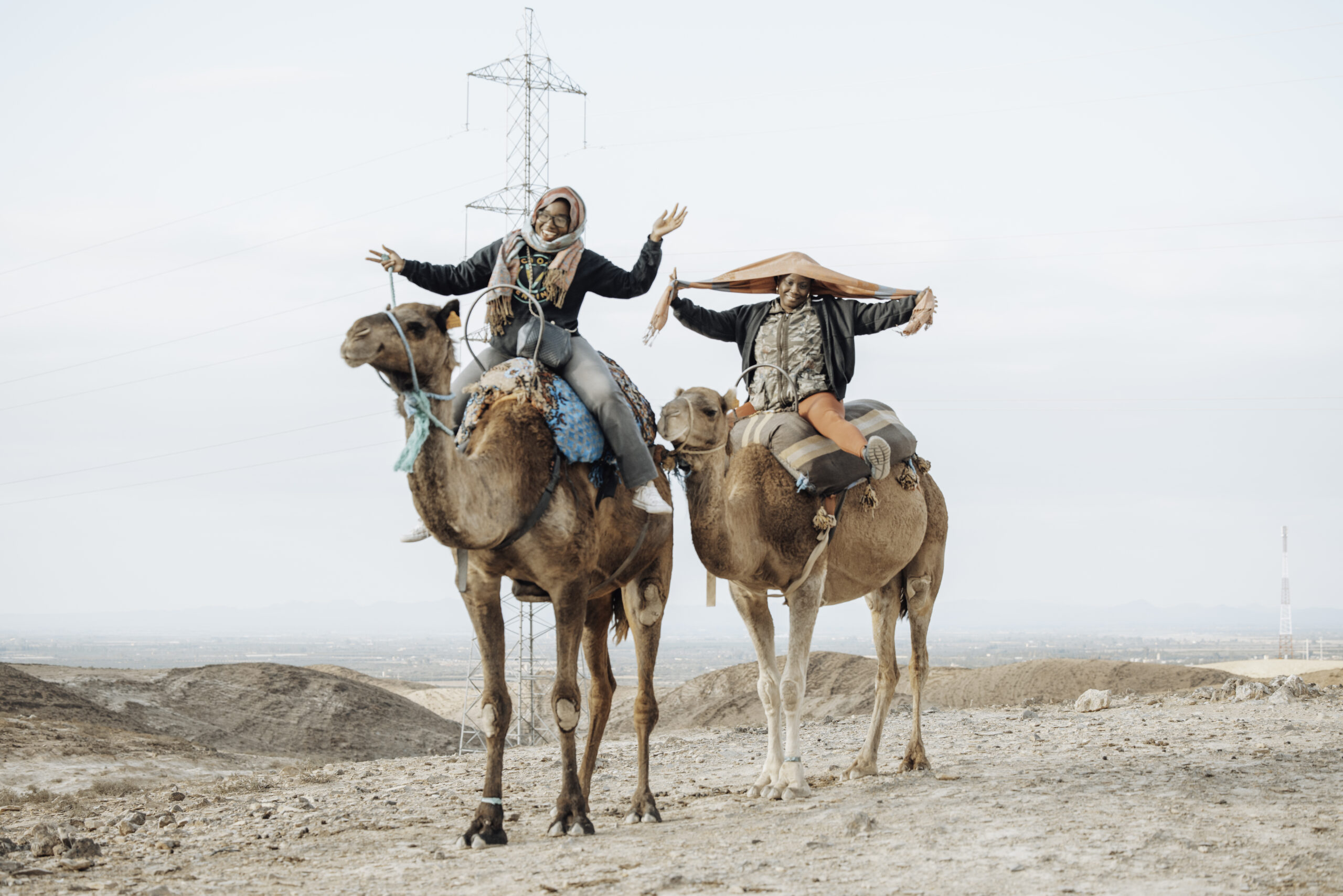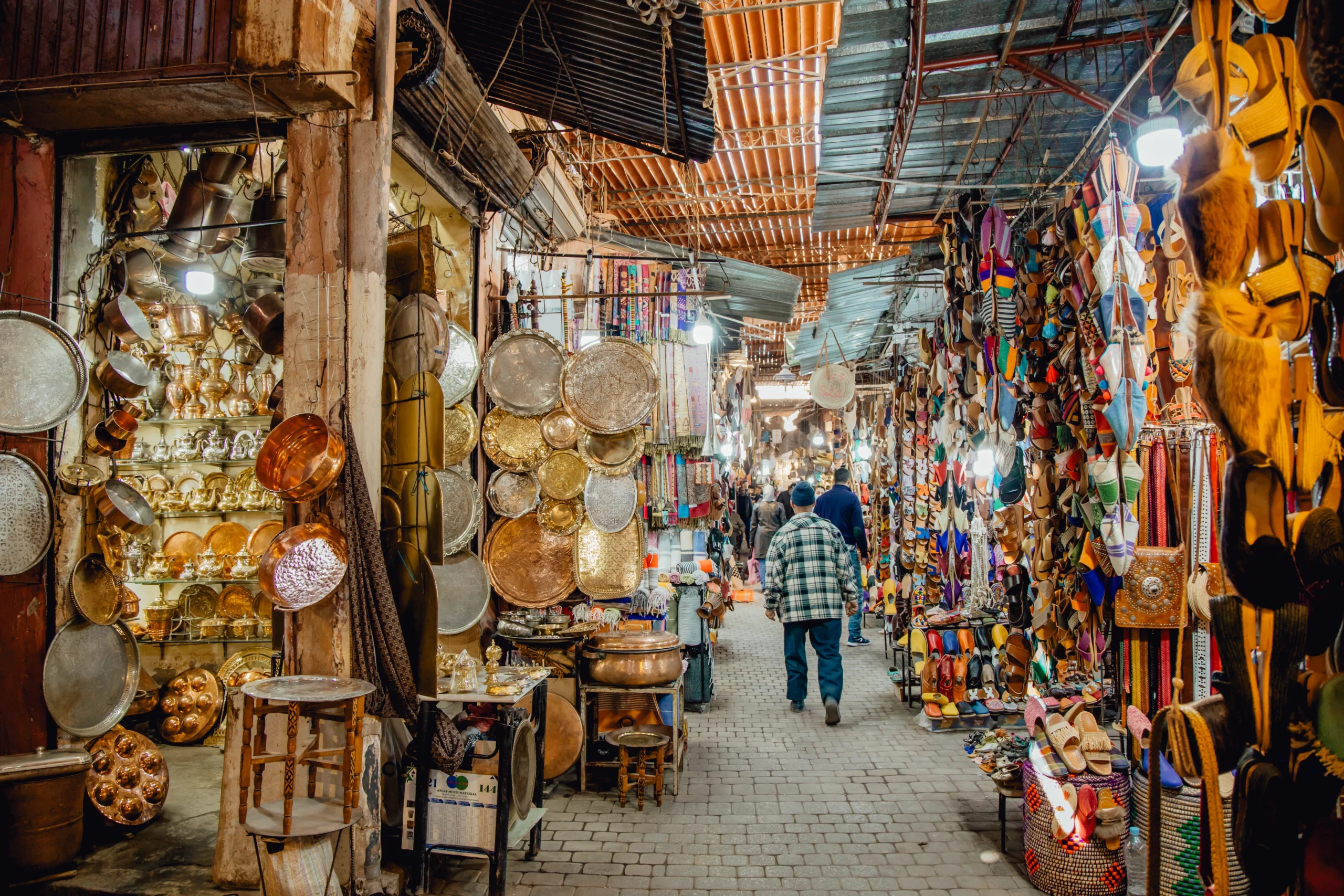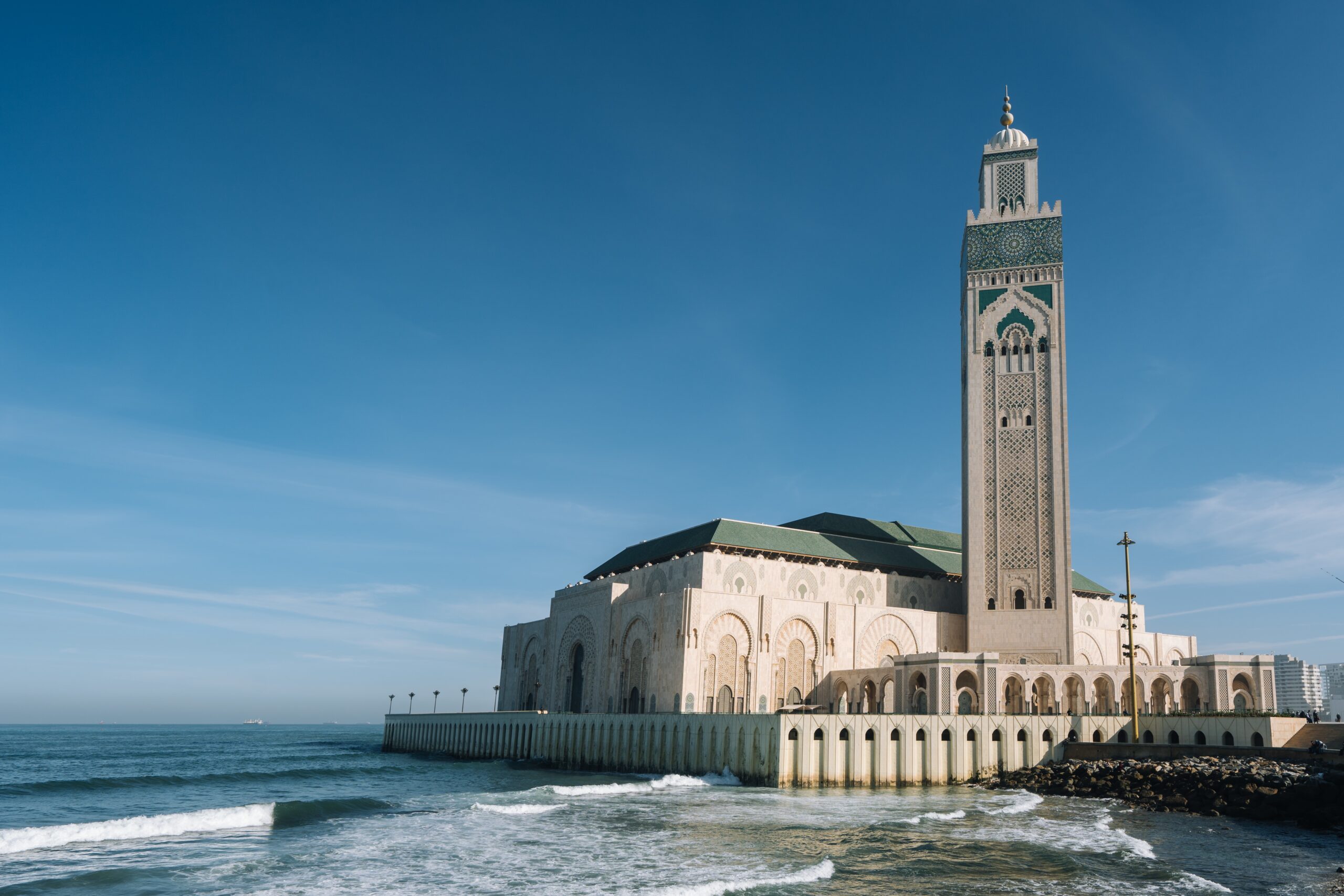Discovering Morocco’s White City Beyond the Silver Screen
Casablanca—the name alone evokes images of classic cinema, exotic intrigue, and timeless romance. Yet beyond the Hollywood portrayal lies a vibrant metropolis where ancient traditions and bold modernity create a fascinating cultural mosaic. As Morocco’s largest city and economic powerhouse, Casablanca offers culture-seeking travelers a unique blend of architectural marvels, sensory experiences, and authentic local encounters that you won’t find in the pages of typical guidebooks.
In this comprehensive guide to the best 5 things to do in Casablanca, we’ll take you beyond the tourist trail to discover the soul of this dynamic coastal city. Whether you’re planning a dedicated visit or incorporating Casablanca into larger Morocco school trips, this curated collection of experiences will help you connect with the city’s rich heritage, savor its distinctive flavors, and create lasting memories of this often-overlooked North African gem.
Must-See Historical and Cultural Sites in Casablanca
Hassan II Mosque: A Masterpiece of Islamic Architecture
Rising dramatically from the Atlantic coastline, the Hassan II Mosque isn’t just one of Casablanca’s must-see places—it’s one of the most impressive religious monuments in the world. Completed in 1993, this architectural marvel features the world’s tallest minaret at 210 meters (689 feet) and can accommodate 25,000 worshippers inside with an additional 80,000 in its courtyard.
What makes the Hassan II Mosque truly extraordinary is its unique position extending partially over the Atlantic Ocean, embodying the Quranic verse that states God’s throne was built upon water. The mosque’s interior showcases the pinnacle of Moroccan craftsmanship—intricate zellige tilework, carved cedar ceilings, and delicate stucco embellishments created by over 10,000 artisans.
Visitor Information:
- Opening Hours: Non-Muslims can visit through guided tours, available Saturday through Thursday from 9:00 AM to 3:00 PM (closed during prayer times)
- Dress Code: Conservative attire is mandatory—shoulders and knees must be covered for both men and women
- Photography: Permitted throughout most areas of the mosque
- Guided Tours: Available in multiple languages, lasting approximately one hour
“The Hassan II Mosque represents more than religious devotion—it symbolizes Morocco’s commitment to preserving traditional craftsmanship while embracing modern engineering capabilities.” — Local architectural historian
The Medina of Casablanca: Where History Lives On
While less famous than its counterparts in Fez or Marrakech, Casablanca’s old medina offers an authentic glimpse into the city’s pre-colonial past. Dating back to the 18th century, this walled district with its labyrinthine alleys provides a striking contrast to the city’s French-influenced downtown.
Enter through the iconic Bab Marrakech gate and immerse yourself in a world of sensory delights—fragrant spice stalls, skilled metalworkers hammering intricate designs, and local vendors selling everything from handcrafted leather goods to traditional instruments.
Unlike more tourist-oriented medinas across Morocco, Casablanca’s old city remains primarily a neighborhood where locals live and work. Venture into the quieter back alleys to discover hidden workshops where artisans practice traditional crafts using techniques passed down through generations.
Visitor Tips:
- Visit midmorning (around 10 AM) when shops are open but before the midday rush
- Look for Pottery Alley near the southern wall, where local ceramicists display their distinctive blue and white wares
- Visit the woodcarving workshop of Master Hamid near the eastern gate to see traditional Moroccan furniture being crafted
- Keep valuables secure and be respectful when photographing people
Villa des Arts: Casablanca’s Cultural Renaissance
Housed in a stunning Art Deco mansion dating from 1934, the Villa des Arts represents Casablanca’s commitment to contemporary artistic expression. This cultural center and gallery showcases rotating exhibitions featuring both established and emerging Moroccan artists.
The building itself is a masterpiece—with its elegant white façade, sweeping staircases, and meticulously restored period details offering insight into Casablanca’s architectural golden age. Inside, you’ll discover a thoughtfully curated collection spanning various artistic movements, from traditional Moroccan influences to avant-garde installations.
What makes Villa des Arts particularly special is its role in documenting Morocco’s artistic evolution over the past century. The permanent collection traces the development of Moroccan modernism, highlighting how local artists integrated international influences while maintaining distinctive cultural identity.
Essential Information:
- Opening Hours: Tuesday to Sunday, 9:30 AM to 7:00 PM (closed Mondays)
- Entry Fee: Free admission (donations appreciated)
- Guided Tours: Available in French and Arabic (English upon request)
Sacré-Cœur Cathedral: Architectural Fusion
Standing in stark contrast to traditional Islamic architecture, the abandoned Sacré-Cœur Cathedral represents a fascinating chapter in Casablanca’s colonial history. Built in the 1930s during the French Protectorate, this Art Deco-Gothic structure blends European ecclesiastical design with Moroccan influences.
While no longer functioning as a church, the building’s impressive façade with its distinctive twin towers remains an important architectural landmark. The cathedral’s current repurposing as a cultural exhibition space reflects Casablanca’s pragmatic approach to preserving historical structures while adapting them to contemporary needs.
Visitor Notes:
- Location: Boulevard Rachidi, easily accessible from Mohammed V Square
- Photography: Exterior photography permitted; interior access varies based on current exhibitions
- Historical Context: The cathedral exemplifies how colonial powers attempted to transplant European architectural traditions while incorporating local design elements
Immersive Experiences: Living Like a Local
Master Moroccan Cuisine: Hands-On Cooking Classes
For culture seekers, few experiences offer deeper insight into Moroccan life than learning to prepare the country’s legendary cuisine. Several cooking schools in Casablanca provide immersive classes that begin with guided tours of local markets to select ingredients and end with participants enjoying the fruits of their labor.
At La Cuisine de Madame Bahija in the Maarif district, visitors can learn traditional techniques for preparing iconic dishes like tagine, pastilla, and various couscous preparations. What sets this experience apart is Madame Bahija’s emphasis on understanding the cultural context of each dish—explaining seasonal variations, regional differences, and the social significance of shared meals in Moroccan society.
Booking Information:
- Classes available in morning (9 AM-1 PM) or afternoon (3 PM-7 PM) sessions
- Small groups (maximum 8 participants) ensure personalized instruction
- Vegetarian options available with advance notice
- Includes recipe booklet and spice samples to take home
Traditional Hammam: Ancient Ritual of Purification
No visit to Casablanca is complete without experiencing a traditional hammam—Morocco’s version of the Turkish bath that combines physical cleansing with social connection. This centuries-old ritual provides insight into an important aspect of Moroccan cultural life while offering a deeply relaxing experience.
For an authentic experience, visit Hammam Ziani in the Gauthier neighborhood, where locals have been gathering for generations. The ritual typically involves progressively warmer steam rooms, vigorous exfoliation with a kessa glove, and application of mineral-rich rhassoul clay.
Essential Hammam Tips:
- Bring a change of underwear, flip-flops, and your own towel (rentals available)
- Women typically visit during daytime hours, men in early mornings or evenings
- Basic service includes steam bath and exfoliation; additional treatments like massage available for extra cost
- Modest swimwear is acceptable in tourist-friendly hammams
“The hammam isn’t merely about cleanliness—it’s a social institution where community bonds are strengthened and traditions passed between generations.” — Local cultural historian
Corniche: Casablanca’s Seaside Playground
To experience contemporary Casablanca culture, head to the Corniche—the city’s vibrant coastline stretching from the Hassan II Mosque toward the upscale Anfa neighborhood. This palm-lined promenade reveals how modern Casablancans balance tradition with cosmopolitan lifestyle.
Begin at Miami Beach (named for its resemblance to the Florida shoreline) and stroll past a fascinating mix of architectural styles. For an authentic local experience, stop at Café Le Rouget near the fishing harbor, where you can enjoy mint tea while watching fishing boats return with the day’s catch.
As evening approaches, the Corniche transforms into the city’s social center. Join locals at one of the many open-air seafood restaurants like La Sqala, built within the restored remains of an 18th-century Portuguese fortress, offering panoramic ocean views and fresh-caught fish prepared in traditional Moroccan style.
Corniche Highlights:
- Best visited late afternoon through evening when locals come out to socialize
- Public beaches available for swimming (most crowded on weekends)
- Numerous cafés offer prime people-watching opportunities
- Accessible via petit taxi from city center (approximately 15-20 MAD)
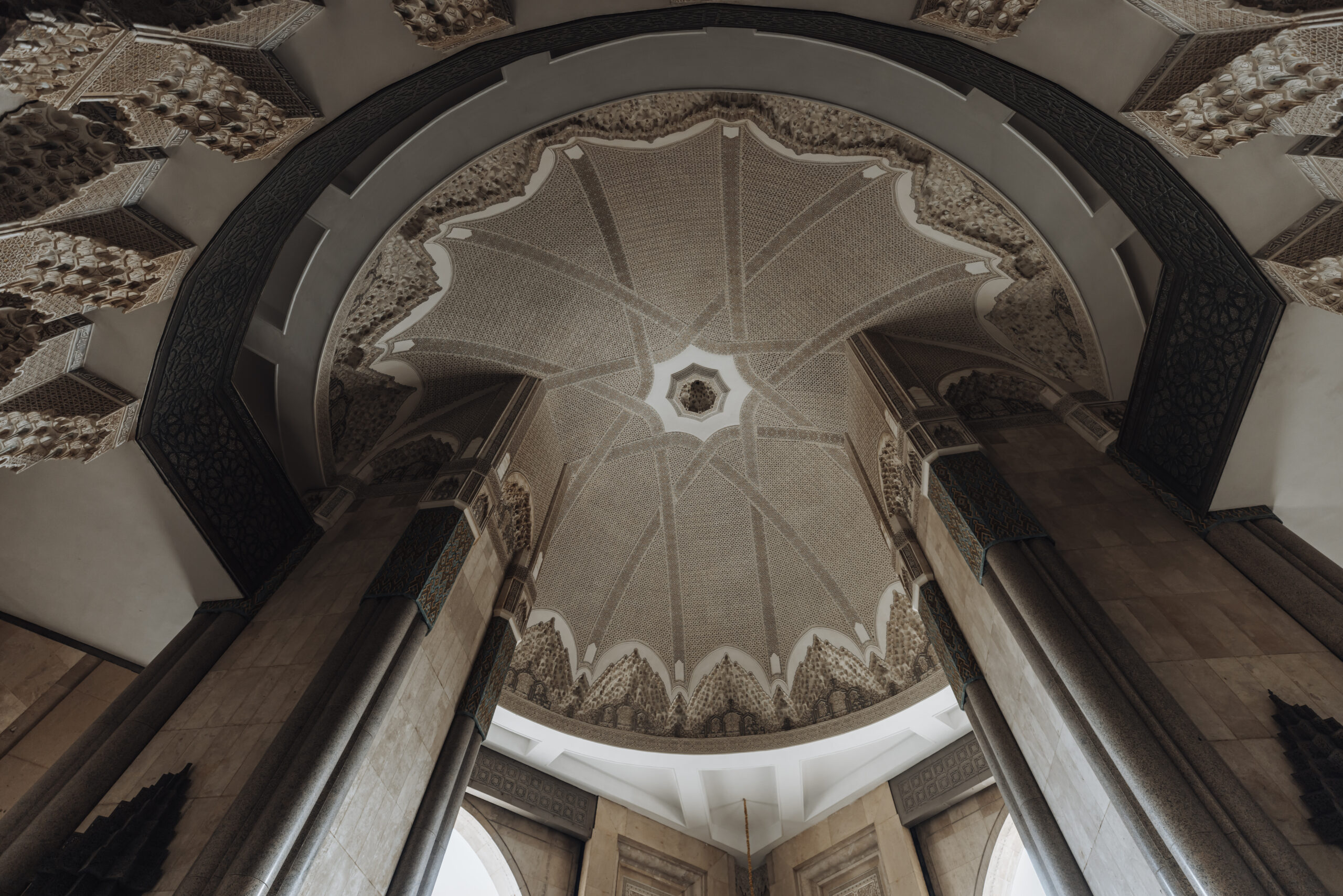
Hidden Gems and Local Favorites
Marché Central: A Feast for the Senses
Located in the heart of downtown, Casablanca’s Central Market offers an authentic glimpse into everyday Moroccan life far from curated tourist experiences. Dating back to 1917, this covered market combines French colonial architecture with vibrant Moroccan commercial traditions.
Early mornings provide the most authentic experience as local chefs and home cooks carefully select the freshest ingredients. The market’s organization reflects traditional Moroccan culinary priorities—fragrant herb and spice vendors clustered together, fishmongers displaying the Atlantic’s bounty in artistic arrangements, and specialized stalls offering preserved lemons, olives, and handcrafted cooking vessels.
Don’t miss the market’s northeastern corner, where women from surrounding rural areas sell hand-rolled couscous, wild honey, and seasonal specialties like fresh almonds and prickly pears depending on the time of year.
Visitor Recommendations:
- Visit between 7-9 AM for the authentic morning market experience
- Try sfenj (Moroccan doughnuts) from the popular stand near the western entrance
- Sample traditional preserved lemons and olives (vendors expect you to taste before purchasing)
- Look for the elderly gentleman near the spice section who creates custom tea blends based on your preferences
Quartier Habous: The New Medina
When French authorities found Casablanca’s historical medina too chaotic for their tastes, they commissioned architect Henri Prost to design the Quartier Habous (New Medina) in the 1930s. The result is a fascinating hybrid—a planned district that combines traditional Moroccan architectural elements with modern urban planning principles.
This pedestrian-friendly neighborhood offers a more navigable alternative to the old medina while still providing authentic shopping opportunities. The district is particularly renowned for its bookshops specializing in rare Arabic texts, traditional bakeries producing honey-soaked pastries, and artisanal workshops where master craftspeople create everything from leather goods to intricately carved wooden furniture.
Don’t Miss:
- Pâtisserie Bennis Habous for traditional Moroccan sweets (their gazelle horns filled with almond paste are legendary)
- The Royal Palace gates (while the palace itself isn’t open to visitors, the ornate entrance is worth seeing)
- The intimate neighborhood mosque with its distinctive green-tiled roof
- Cooperative Attawhid, where local women produce and sell handwoven textiles using traditional looms
Le Riad: Authentic Dining Beyond the Guidebooks
Hidden behind an unassuming façade on a quiet residential street in the Gauthier district, Le Riad offers one of Casablanca’s most authentic dining experiences. Unlike restaurants catering primarily to tourists, this family-owned establishment serves traditional Moroccan home cooking to a predominantly local clientele.
What makes Le Riad special is its commitment to regional variations of classic dishes. Their Friday couscous features seven different vegetable preparations arranged around tender lamb shoulder, while their chicken tagine incorporates preserved lemons from a specific valley in the Atlas Mountains known for their distinctive flavor.
The restaurant’s interior—with its intimate courtyard, traditional seating on low cushions, and hand-painted tilework—provides the perfect backdrop for a leisurely meal. For the full experience, conclude your dinner with house-made mint tea ceremonially poured from a silver teapot.
Dining Details:
- Location: 12 Rue Ibn Batouta, Gauthier District
- Hours: Lunch 12-3 PM, Dinner 7-11 PM (closed Mondays)
- Reservations: Recommended for dinner (call ahead: +212-522-94-0111)
- Signature Dishes: Seven-vegetable couscous, lamb tagine with dates and apricots, pastilla with sea bass
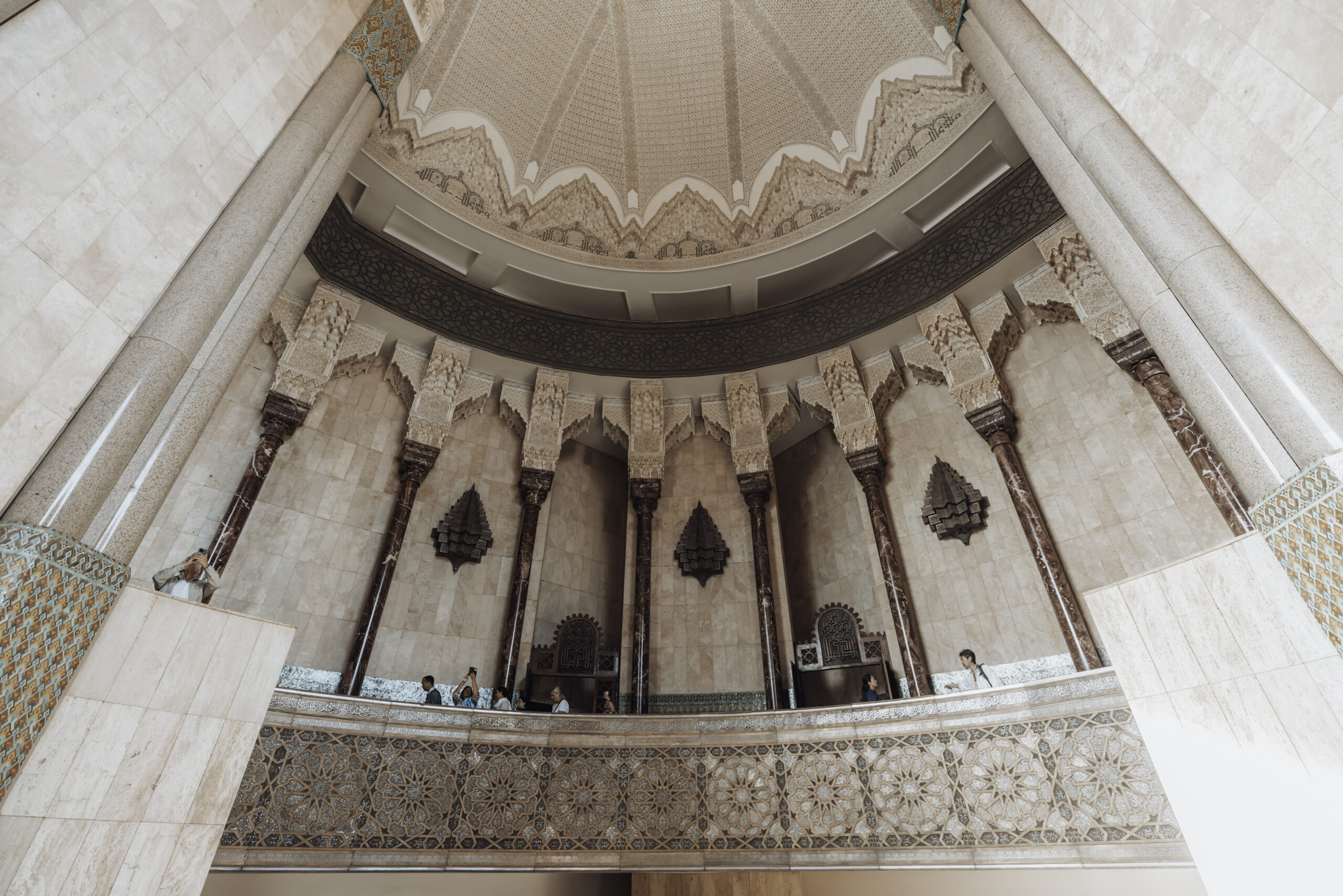
Day Trips from Casablanca
Rabat: Morocco’s Elegant Capital
Just one hour north of Casablanca by train lies Rabat, Morocco’s political capital and a UNESCO World Heritage Site. With its well-preserved medieval fortress, archaeological sites, and immaculately maintained gardens, Rabat offers a refined contrast to Casablanca’s commercial energy.
Key Attractions:
- The Kasbah of the Udayas, a picturesque blue-and-white walled city overlooking the Atlantic
- Hassan Tower, the incomplete 12th-century minaret standing alongside the ruins of what was intended to be the world’s largest mosque
- Chellah, an atmospheric complex containing Roman ruins and a medieval Islamic necropolis
- The Royal Palace (exterior only) and its ceremonial guards in traditional attire
Getting There:
- ONCF trains depart hourly from Casablanca’s Casa Voyageurs station (50-80 MAD one-way)
- First-class tickets recommended for guaranteed seating
- Journey time approximately 1 hour each way
- Morocco Travel 4×4 offers guided day trips including transportation and expert commentary (from 850 MAD per person)
El Jadida: Portuguese Legacy
For a fascinating glimpse into Morocco’s multicultural history, head south to El Jadida (formerly known as Mazagan). This coastal town, easily accessible from Casablanca, contains one of North Africa’s best-preserved Portuguese fortifications, recognized by UNESCO as a World Heritage Site.
The 16th-century Cistern—an underground chamber originally built as a water storage facility—creates mesmerizing light effects as sunbeams reflect off the shallow water covering the floor. The surrounding Portuguese city, with its distinctive European-influenced architecture adapted to North African conditions, provides a tangible link to Morocco’s maritime history.
Visit Highlights:
- The Portuguese Cistern with its haunting atmosphere and remarkable acoustics
- Intact city walls offering panoramic coastal views
- Manueline Church showcasing distinctive Portuguese Gothic architecture
- Seafood restaurants serving fresh catches with both Moroccan and Portuguese influences
Transportation Options:
- CTM buses depart regularly from Casablanca’s Ouled Ziane station (approximately 50 MAD one-way)
- Grand taxis available for more flexible scheduling (negotiate price in advance, typically 300-400 MAD for entire taxi)
- Journey time approximately 1.5 hours each way
- Morocco Travel 4×4 offers combined El Jadida and beach excursions with lunch included (from 750 MAD per person)
Venture Beyond: Multi-Day Excursions with Morocco Travel 4×4
For travelers seeking to explore beyond Casablanca’s immediate surroundings, Morocco Travel 4×4 offers expertly guided adventures ranging from week-long journeys to comprehensive multi-week expeditions. Using Casablanca as a starting point, their custom 4×4 vehicles provide comfortable access to Morocco’s most dramatic landscapes and cultural treasures.
Popular Morocco Travel 4×4 Itineraries from Casablanca:
Southern Morocco Explorer (7 days):
- Day 1-2: Casablanca to Marrakech with cultural immersion in the Red City
- Day 3-4: Cross the High Atlas Mountains with overnight in traditional Berber villages
- Day 5-6: Sahara Desert experience with camel trek and luxury desert camp
- Day 7: Return journey through dramatic landscapes with authentic cultural encounters
Grand Morocco Circuit (10 days):
- Comprehensive exploration of Morocco’s four imperial cities (Rabat, Meknes, Fez, and Marrakech)
- Blue city of Chefchaouen with its distinctive architecture and mountain setting
- Middle Atlas cedar forests and Barbary macaque encounters
- Sahara Desert experience with traditional music and astronomy sessions
- UNESCO World Heritage sites including Aït Benhaddou kasbah
Ultimate Morocco Experience (12 days):
- Atlantic Coast journey from Casablanca through Essaouira to remote beaches
- Imperial cities with specialized local guides and exclusive cultural experiences
- Three nights in the Sahara exploring different desert landscapes
- Atlas Mountains trekking with overnight stays in traditional Berber villages
- Culinary focus with specialized food experiences and cooking workshops
- Visits to lesser-known oases and palm groves in southern Morocco
All Morocco Travel 4×4 tours include comfortable transportation in air-conditioned vehicles, professional English-speaking drivers with cultural expertise, carefully selected accommodations, and unique cultural encounters arranged exclusively for their clients. Their Casablanca office can customize itineraries based on specific interests, from photography to culinary exploration to architectural studies.
Practical Information for Visiting Casablanca
Best Time to Visit
Casablanca enjoys a mild Mediterranean climate tempered by Atlantic breezes, making it pleasant year-round. However, certain seasons offer distinct advantages:
| Season | Weather | Crowds | Events |
|---|---|---|---|
| Spring (Mar-May) | 15-22°C (59-72°F), occasional rain | Moderate | International Film Festival (April) |
| Summer (Jun-Aug) | 20-26°C (68-79°F), humid | High | Festival de Casablanca (July) |
| Fall (Sep-Nov) | 17-24°C (63-75°F), ideal | Low | Harvest season for culinary experiences |
| Winter (Dec-Feb) | 8-18°C (46-64°F), rain possible | Low | Boulevard Festival (December) |
Recommended: Mid-September to November offers perfect weather, fewer tourists, and reasonable accommodation rates.
Getting Around Casablanca
Casablanca offers several transportation options for navigating the city:
- Petit Taxis: Red compact cars offering metered service within city limits (ensure meter is used)
- Tramway: Modern, clean, and efficient service connecting major attractions (7 MAD per journey)
- Buses: Extensive network but can be crowded and confusing for visitors
- Ride-Sharing: Careem operates throughout Casablanca (download app before arrival)
- Guided Transportation: Morocco Travel 4×4 offers private city tours with drivers/guides (half-day from 450 MAD)
For first-time visitors, the tramway provides the most straightforward option for major sights, while petit taxis offer flexibility for reaching places off the main routes.
Accommodation Recommendations
Casablanca offers lodging options across all budget categories:
Luxury:
- Four Seasons Casablanca (Anfa neighborhood, oceanfront location)
- Hyatt Regency (city center, rooftop pool with panoramic views)
Mid-Range:
- Hotel & Spa Le Doge (Art Deco boutique hotel in central district)
- Kenzi Tower (modern high-rise with excellent city views)
Budget-Friendly:
- Ibis Casa Voyageurs (convenient for train travelers)
- Hotel Central (simple rooms in historic building near old medina)
Note: Morocco Travel 4×4 can arrange accommodations as part of their tour packages, often securing preferential rates at partner hotels.
Safety and Cultural Tips
Casablanca is generally safe for visitors who exercise standard precautions:
- Dress modestly, particularly when visiting religious sites and traditional neighborhoods
- Learn basic greetings in Arabic or French (simple efforts are greatly appreciated)
- Negotiate taxi fares in advance if meters aren’t used
- Be aware of your surroundings in crowded areas
- Respect local customs during Ramadan by avoiding eating, drinking, or smoking in public during daylight hours
When bargaining in markets, remember that the process is considered a social interaction rather than confrontational—maintain a friendly demeanor and be prepared to walk away if prices remain too high.
Conclusion: Casablanca Beyond the Tourist Trail
Casablanca may not offer the instant Instagram gratification of Marrakech’s medina or Chefchaouen’s blue streets, but what it lacks in postcard-perfect scenes, it more than compensates with authentic experiences and cultural depth. By focusing on the city’s architectural treasures, immersive cultural experiences, and local favorites, visitors gain insight into contemporary Moroccan life rarely found on conventional tourist circuits.
Whether you’re incorporating Casablanca into broader Morocco school trips or dedicating time to explore this dynamic coastal city, the experiences outlined in this guide provide meaningful connections to both Morocco’s rich heritage and its forward-looking spirit. From the magnificent Hassan II Mosque rising from the Atlantic to intimate moments shared over mint tea in a local café, Casablanca reveals itself as a city of fascinating contrasts and hidden treasures waiting to be discovered by the curious traveler.
For travelers wishing to extend their Moroccan adventure beyond Casablanca, Morocco Travel 4×4 offers expertly guided excursions ranging from week-long journeys to comprehensive 12-day expeditions. Their local expertise and customizable itineraries make them an excellent choice for exploring Morocco’s diverse landscapes and cultural treasures with Casablanca as your starting point.
Have you visited Casablanca recently? Share your favorite experiences in the comments below! For personalized travel planning assistance or to inquire about guided tours focusing on Casablanca’s architectural heritage, contact our team or Morocco Travel 4×4 using the form below.

